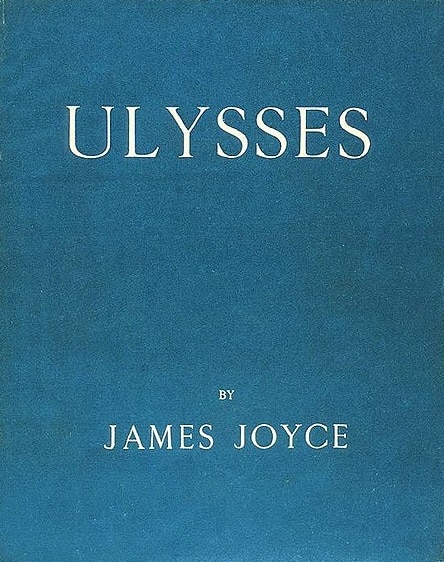
Stream of consciousness writing is the practice of capturing the thoughts that enter our head without inhibition, and such became a popular style of writing in the early 19th Century by authors such as Leo Tolstoy and Edgar Allen Poe. It also made an impression on Modernist writers. Samuel Beckett and Virginia Woolf employed such a technique, which is still used to this day.
Yet stream of consciousness wasn’t a literary technique to begin with. The world of psychology created the term, with psychologists like Alexander Bain and William James discussing it in the late 19th Century. After all, it all stems from the free-flowing thoughts of our own minds.
So, you’re probably thinking, how does stream of consciousness help writers?
What purpose does it serve in the stories we tell? Stream of consciousness allows us to explore a character’s thoughts on a deeper level, and therefore write an even more authentic insight into who they are.
Instead of being restricted by physical descriptions and dialogue, writers can delve into a character’s inner psyche and follow their character’s thoughts as they experience a scene. The more realistically we can portray our characters, the better our audiences understand them.
As Humphrey defines: “the attempt to create human consciousness in fiction is a modern attempt to analyze human nature” (1958, pg. 6) and for writers, to portray the authentic thoughts of their characters to an audience.
Characteristics of Stream of Consciousness Writing
It’s no surprise that stream of consciousness writing shares many characteristics with techniques used in psychology and therapy practices.

Free Association
Free association is a psychoanalysis technique developed by Sigmund Freud between 1892 and 1898, and is still used today. Freud’s theory is that everything a person says and does, is directly linked to their previous experiences and instincts. This can be on a conscious or unconscious level.
In a therapy environment, the therapist gives a prompt or instruction to which the subject will begin to talk in a relaxed state, their thoughts the first things that pop into their head, completely uncensored. The idea is that based on what the subject says, the therapist can interpret hidden meaning and delve into what a deep-rooted problem could be.
How does this work in writing?
Well, it’s all about getting into the mind of your character at a particular point in your story. How are they feeling at this moment? What experiences have they had leading up to this moment? Then, using a prompt, try and imagine what thoughts may go through their head, once again, uncensored. Free write those thoughts.
Fragmentation

In the true spirit of thoughts darting from one to another without seemingly much cohesion, fragmentation is a great technique to show this in writing. By jumbling the sequence of a story, we can emulate the human thought processes, giving the audience an intimate sense of thoughts and feelings.
Traditional narratives are linear and straight forward for an audience to follow, however fragmented ones can start at any point in the story’s action. This means the audience must work hard to piece together events and form their own understanding of the narrative. A lot like real life, perhaps?
Flashbacks and flash-forwards are examples of a fragmented narrative, as well as parallel universes.
Interior Monologue
Interior monologues could be defined as streams of consciousness, but in reality, they are coherent and linear in their depiction. Take Hamlet’s famous soliloquy “To Be or Not To Be!”. Here, Hamlet is expressing his inner-most thoughts, yet they are one narrative, each line leading on from the one previous. Hamlet is fully aware of his thought process and what he’s trying to say in this moment.
In screenplays, in particular, interior monologues could be defined as voice overs; consistent dialogue with a clear purpose and understanding of what is happening on screen. We wouldn’t necessarily use stream of consciousness directly in a screenplay as novelists would, but stream of consciousness can be extremely useful in character development and understanding inner thoughts or motivations.
This doesn’t mean to say that interior monologue isn’t useful in character creation and understanding.
In fact, writing a monologue in the shoes of one of your characters to show their feelings at a certain moment in time can be an extremely useful exercise.
Style of Stream of Consciousness Writing
The syntax of stream of consciousness is very different from that of traditional prose. It is usually choppy and can have many errors in it. Alongside this, grammar is usually jumbled, the subject having no sense of it within their thoughts.
Thoughts that can also be repetitive, their links to each other can easily be loose or even non-existent.
Key Examples of Stream of Consciousness Writing
Let’s take a look at some famous examples of stream of consciousness writing.
Ulysses – James Joyce
In Episode 6 of Ulysses, protagonist Leopold Bloom is at a funeral. At this point, the narrative is a direct stream of his consciousness. In this extract, Bloom is hooked on the finer details of a suit.
“Nice soft tweed Ned Lambert has in that suit. Tinge of purple. I had one like that when we lived in Lombard street west. Dressy fellow he was once. Used to change three suits in the day. Must get that grey suit of mine turned by Mesiaats. Hello. It’s dyed. His wife I forgot he’s not married or his landlady ought to have picked out those threads for him.”
Notice that Joyce uses short, snappy sentences to depict Bloom’s quick thought processes. We see elements of free association; Bloom’s memory jogged to remember a suit he used to have. Then that he needs to take the suit he’s currently wearing to his tailor, who he recalls mid-sentence doesn’t have a wife.
Mrs. Dalloway – Virginia Woolf
Woolf uses stream of consciousness to allow her characters to freely travel through time, linking past experiences to the current narrative.
“What a lark! What a plunge! For so it always seemed to me when, with a little squeak of the hinges, which I can hear now, I burst open the French windows and plunged at Bourton into the open air. How fresh, how calm, stiller than this of course, the air was in the early morning; like the flap of a wave; the kiss of a wave; chill and sharp and yet (for a girl of eighteen as I then was) solemn, feeling as I did, standing there at the open window, that something awful was about to happen …”
Here, Woolf compares the current morning to all early mornings, then links that to a feeling of dread, yet is unable to identify exactly what it is. This could be related to free association, where unconscious memory informs present feelings and thoughts.
Tips for Writing Stream of Consciousness
Practice Free Association Exercises
Use different writing prompts to kickstart your mind, and most of all, relax. Almost meditate to get yourself in the zone. It’s important that you’re not commanding your thoughts too much during this process, and let them flow naturally. Don’t censor yourself and write down whatever comes to mind.
Don’t stop as you write, and make sure you have little to no distraction to tempt you out of your writing. Even if you look back and read what looks like utter nonsense, remember these are the most authentic thoughts that go through your mind daily.
Experiment with Syntax and Punctuation
As we’ve discussed, syntax and punctuation aren’t usually considered in stream of consciousness writing, so don’t let them restrict you in this instance. Experiment with them and see how they could help you reflect your thought process in the best possible way.
Reflect on your Writing Afterwards
Once you’ve reached a natural end to your stream of consciousness, come back to it after a few days.
Without judgment or a critical mind, reflect on your thought processes (or your character’s if you’re doing this exercise for a fictional purpose). Reflections like this can help you towards your wider writing goals.

How indicative are these processes of your day-to-day thoughts? Can you link any anxieties, triggers, or worries to this process?
Benefits of Stream of Consciousness Writing
Stream of consciousness writing can be beneficial both in our writing and personal lives. It allows us to articulate things more effectively, allowing us to make more sense of our thoughts and the world around us.
On a personal level, stream of consciousness writing can be a release and reduce stress and anxiety.
By writing thoughts down in black and white, we can help ourselves understand our worries and problems.
Conclusion
Stream of consciousness writing has a robust background in psychology and literature, which makes it a reliable source for creativity as well as in our personal lives. It’s comprised of several elements, such as fragmented syntax and grammar, and free association, allowing the subject to fully relax and dive into their truly authentic thought processes.
In terms of creative writing, the technique allows us to realistically understand how the human mind works, and become more intimate with our characters and portray that to an audience.
Check out more tips on how to get started as a writer here!



